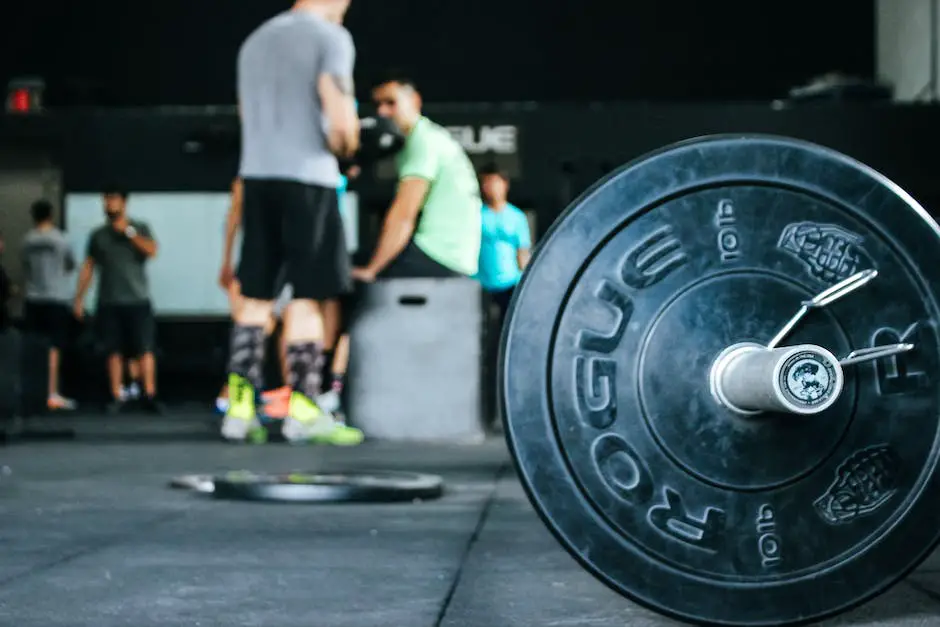Achieving physical strength and muscle growth is not as simple as lifting weights regularly. It’s a multifaceted goal that requires a comprehensive understanding of the science behind muscle growth, strength training exercises, proper nutrition, and the creation of an effective routine. This body of knowledge is not just about knowing which exercises to do, but understanding how they impact our bodies, particularly muscle development and recovery. Our ability to gain strength and grow muscles are influenced by biological factors such as genetics, and lifestyle factors including nutrition, making it important to discover the optimal balance to benefit our unique body types.
Understanding the Basics of Muscle Growth
Understanding the Science Behind Muscle Growth
Muscle growth, or hypertrophy, is primarily guided by the principles of progressive overload, protein synthesis, and recovery. Progressive overload refers to gradually increasing the amount of physical stress placed on your body during exercise. This increases the demand on muscle fibers, leading to strength and size gains. Essentially, your body responds to the physiological stress posed by the overload by thickening and strengthening the muscle fibers.
Role of Protein Synthesis and Recovery in Building Strength
Protein synthesis is the process where the body builds and repairs damaged proteins, which is crucial in muscle development. When you exercise, your body breaks down muscle protein. However, in the recovery period afterwards, your body rebuilds these proteins stronger and thicker to respond to the stresses that caused the initial damage.
Recovery is just as important to muscle growth as working out and eating right. During rest periods, your body replenishes energy stores and repairs muscle tissue, both of which are important for strength development. Quality sleep is a key element in recovery, as some of the most crucial recovering and rebuilding processes in the body occur while we sleep.
Factors Impacting Muscle Growth: Genetics, Nutrition, and Lifestyle
Genetics play a critical role in muscle growth. Some people inherit genes that contribute to superior athletic performance and muscle growth. However, even with less favorable genetics, anyone can build strength and grow muscle with the proper strategy and consistent effort.
Nutrition is another vital factor. High-quality protein is important for muscle recovery and growth, helping to repair any damage from the weight-lifting session. Carbohydrates are also important as they provide the energy your muscles need to work hard. Fat, too, plays a vital role in hormonal regulation and recovery – processes that are integral to muscle growth.
Living a healthy lifestyle complements your diet and exercise. Regular physical activity, adequate sleep, and a balanced diet promote general wellbeing. It’s important to minimize stress levels, too, as chronic stress can impact recovery and muscle growth adversely.
Combining all these factors with consistent strength training will effectively help build muscle and strength. It’s a process that requires dedication, proper planning, and above all, patience. But with perseverance, the results will be rewarding.

Photo by echaparro on Unsplash
Effective Strength Training Exercises
Types of Exercises Essential for Building Strength
When it comes to building strength, few exercises are as effective as compound exercises. These exercises work multiple muscle groups at the same time, allowing an individual to build functional strength efficiently. Examples of compound exercises include deadlifts, squats, bench press, and rows. A deadlift, for example, works the back, glutes, hamstrings, and core simultaneously, developing overall body strength.
Body weight exercises, too, can contribute significantly to muscle development. These exercises utilize the weight of the body as resistance, requiring no additional equipment. Push-ups, pull-ups, lunges, and planks are all examples of body weight exercises. While they primarily target specific muscle groups, they also engage various stabilizing muscles throughout the body, leading to improved balance and overall strength.
In addition to compound and bodyweight exercises, isolation exercises also play a crucial role in a comprehensive strength-training regimen. Unlike compound exercises, isolation exercises target a single muscle group at a time. For instance, bicep curls target the biceps, while leg extensions solely work the quadriceps. While these exercises may not fully define total body strength, they are essential in strengthening specific muscles that may be missed during compound or body weight exercises.
Muscle-Group Targeting and Overall Strength
Creative and strategic muscle-group targeting can dramatically enhance strength-building outcomes. Certain exercises specifically target the major muscle groups — the legs, the chest, the back, the arms, the shoulders, and the abdominal muscles, while others work underutilized muscles that could provide a strength foundation for more significant movements.
For example, squats mainly target the quadriceps, glutes, and hamstrings, but they also engage the back and the core. Similarly, pull-ups primarily work the back and arm muscles but also engage the shoulder muscles. Through a combination of these exercises, one can effectively engage all the upper and lower body muscle groups, leading to balanced, overall body strength.
How Different Exercises Contribute to Strength
Understanding the contribution each exercise makes to overall strength can ensure both efficiency and effectiveness in a workout routine. Compound exercises, functioning as multi-joint movements, promote coordinated muscle function, improve stability, and increase muscular strength and endurance.
Body weight exercises foster functional strength that benefits daily activities and health. They build core stability, the foundation for any movement you make with your body, and they also boost your body’s metabolic rate, leading to improved muscle tone and fat loss, which indirectly aids in strength building.
Isolation exercises, while often viewed as supplemental, can significantly contribute to strength. By targeting specific muscle groups, they can help overcome weak areas, improve muscular symmetry, and enhance the effectiveness of compound and body weight exercises.
Knowing how to incorporate these different exercises into a weekly routine and how to vary them can help avoid plateau and continuously challenge the body, leading to consistent strength gains.

Nutrition for Muscle Growth
The Significance of Nutrition for Muscle Growth
Nutrition plays a significant role in muscle growth and recovery after exercise, particularly resistance and strength training exercises. Proper nutrition will not only fuel workouts, but also help the body rebuild muscle fibers, leading to increases in muscle size and strength. Therefore, an adequate diet is as integral to building muscle strength as the exercise regimen itself.
Macronutrients Vital for Muscle Growth
The three primary macronutrients – carbohydrates, proteins, and fats – each have distinctive roles in muscle growth and recovery.
- Protein: Protein is the most crucial macronutrient for muscle growth. It provides the amino acids that the body uses to repair and build muscle fibers following workouts. Aiming for at least 1 gram of protein per pound of body weight each day will support muscle growth.
- Carbohydrates: Carbohydrates are the body’s primary source of energy. They fuel workouts and help replenish glycogen stores in muscle tissue post-workout. Consuming enough carbohydrates will ensure that the body does not break down muscle for energy during rigorous workouts.
- Fats: Fats are also an essential energy source, especially for lengthy, intense workouts. They help maintain healthy hormone levels, which can support muscle growth.
MicroNutrients Essential for Strength Training
In addition to the macronutrients, several micronutrients – vitamins and minerals – are essential for good health and optimal muscle function. These include B vitamins, which help the body process protein and carbohydrates; Vitamin D, responsible for bone health and immune function; Iron, necessary for oxygen transport to muscles; Calcium, crucial for muscle contraction; and Magnesium, involved in muscle function and protein synthesis.
Timing of Meals and Snacks
Meal timing also significantly impacts muscle growth. Eating a balanced meal with protein, carbs, and fats 1-2 hours before a workout helps ensure enough energy for the activity, while eating a high-protein, high-carb meal within an hour after exercise supports muscle recovery and growth.
Also consuming small, balanced meals or snacks every three to four hours throughout the day can maintain stable blood sugar levels, valuable energy levels, and consistent protein availability for muscle growth.
Supplementing Your Diet
Supplements can be added to support your diet, especially if it is challenging to get certain nutrients from whole foods. However, they should never replace a balanced and varied diet. Some popular supplements for muscle growth include protein powders (like whey or plant-based proteins), creatine, and branched-chain amino acids (BCAAs). Discuss with a healthcare provider or a qualified sports nutritionist before starting a supplementation program.

Creating a Strength Training Routine
Understanding the Basics of Strength Training
The basics of a strength training routine involve understanding the three primary factors of volume, intensity, and frequency. Volume refers to the total amount of weight you lift in a single workout sessions, usually calculated by multiplying the weight by the total number of repetitions. Intensity refers to how hard you work in each set of your workout, typically gauged by how close you lift to your one repetition max (1RM), the maximum weight you can lift for one rep of a particular exercise. Frequency relates to how often you work out a particular muscle group or perform a specific exercise in a week.
Building Strength through Volume
Volume is crucial in strength building. When you increase the volume of your workouts, you stimulate muscle growth and strength development. A simple way to increase volume is to either lift more weight or do more repetitions. For a beginner, aim for 1-3 sets of 8-12 repetitions for each exercise in your routine.
Increasing Intensity for Greater Gains
Intensity is equally critical in building strength. As you progress, aim to lift heavier weights that challenge your muscles and push them to adapt and grow stronger. However, this doesn’t mean you should always be lifting your 1RM. Instead, aim to work within 70-85% of your 1RM. Too much intensity can lead to injury, so it’s important to find the right balance.
Frequency: Hitting the Right Balance
Frequency in strength training comes down to how many times you train each week. A good starting point is to aim for two or three full-body workouts per week. This gives your muscles enough stimulation to grow stronger while offering enough recovery time. As you gain more experience, add more training sessions that focus on specific muscle groups.
The Importance of Variability and Progression
Variability and progression are key to avoid plateaus and ensure continued strength gains. Variability means changing your exercises, volume, intensity, or rest periods regularly to continue challenging your muscles. Progression refers to systematically increasing your training volume, intensity, or frequency over time. The human body adapts quickly to the stress of exercise, so to keep improving, you need to progressively overload your muscles by increasing the demands you place on them.
Valuing Recovery in Your Routine
Proper recovery is as important as the workouts themselves. When you work out, you create small tears in your muscle fibers. Your body repairs these tears during rest, making your muscles stronger. Ensure you have adequate sleep and nutrition to aid in muscle recovery. Including rest days in your routine is a crucial part of strength training.
In conclusion, by understanding these principles of volume, intensity, and frequency, along with the importance of variability, recovery, and progression, you can create an effective strength training routine that will help you build strength efficiently.

Photo by johnarano on Unsplash
Ultimately, building strength and muscle mass successfully means going beyond occasional workouts. It requires integrated knowledge of muscle growth science, proper exercise selection, adequate nutrition, and a carefully planned routine to leverage volume, intensity, and frequency of exercises. Every individual is different, which is why it is imperative to understand the underlying principles of strength building and muscle growth to create your customized strategy. Emphasizing recovery and progression while maintaining variability in your routine will go a long way in promoting effective and sustained muscle growth. Throughout this journey, remember that consistency, patience, and commitment are key traits that will catalyze your transformation.
